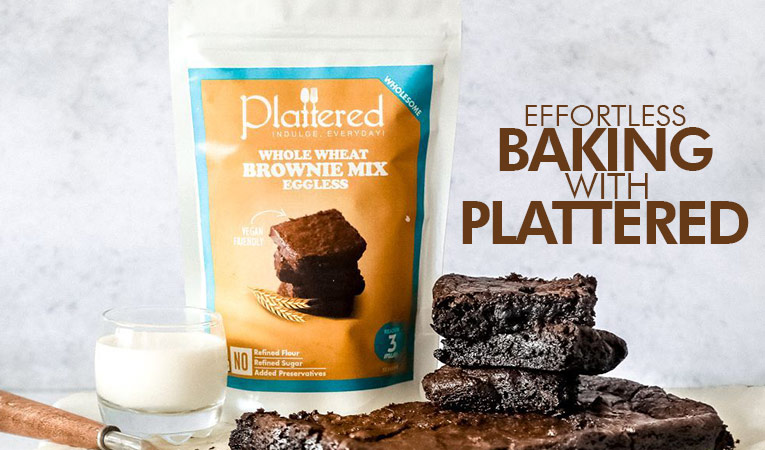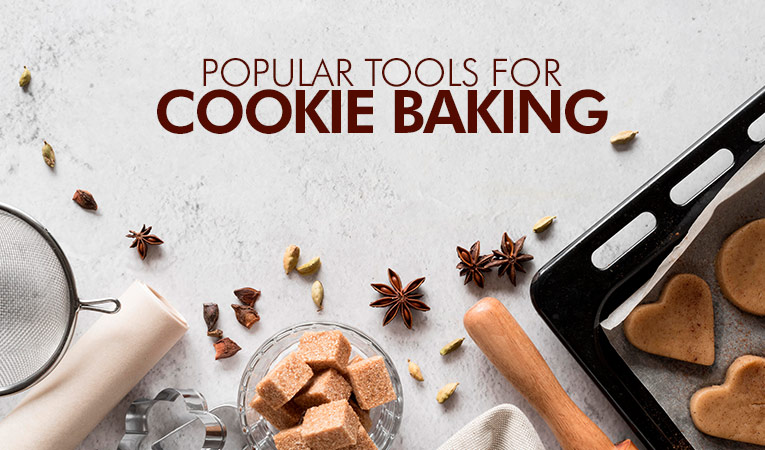All-Purpose Flour: A Bakers Essential
24-05-2025

All-purpose flour is the unsung hero of the baking world. Found in nearly every kitchen, it’s the most commonly used flour due to its remarkable versatility. With a moderate protein content - typically between 9% and 12% - all-purpose flour strikes the perfect balance for a wide range of recipes. From chewy cookies and fluffy cakes to crispy pizza crusts and rustic breads, it offers a reliable texture and structure that meets the needs of both novice home bakers and seasoned professionals.
What makes all-purpose flour a pantry essential is its adaptability. Unlike specialized flours that cater to a single type of baking - like cake flour for soft bakes or bread flour for hearty loaves - all-purpose flour covers a broad spectrum of uses. This flexibility not only simplifies shopping but also reduces kitchen clutter, as one flour can handle multiple tasks. It’s milled from a blend of hard and soft wheat, making it suitable for nearly all baking applications without compromising on quality or taste.
In this blog, we’ll take a deeper look at what makes all-purpose flour so indispensable. We’ll break down the various types available on the market, such as bleached vs. unbleached, enriched, organic, and even gluten-free variants. We’ll also explore its diverse uses in baking, tips for selecting the best quality flour, and review some popular brands that deliver consistent results. By the end, you’ll not only understand the science and practicality behind all-purpose flour, but also gain the confidence to choose and use it wisely in your baking journey. Whether you’re baking for fun, for family, or for business, this essential ingredient is your trusted companion in the kitchen.
What is All-Purpose Flour?
All-purpose flour is a refined wheat flour made from a balanced blend of hard and soft wheat varieties. This versatile ingredient is finely milled to achieve a smooth, consistent texture, making it ideal for a wide range of culinary applications—from baking to thickening sauces. Its origins trace back to the need for a single, multipurpose flour that could perform reasonably well across various recipes without requiring multiple flour types in the pantry.
The production of all-purpose flour involves several key steps. First, wheat grains are cleaned and conditioned with moisture before being ground through a series of rollers. The endosperm - the starchy interior of the wheat kernel - is separated from the bran and germ during milling. The result is a refined white flour with a moderate protein content, typically ranging from 9% to 12%, which determines its gluten-forming potential. This balance makes it suitable for producing structure in baked goods without being too dense or too delicate.
Nutritionally, all-purpose flour provides carbohydrates, small amounts of protein, and essential vitamins like folate and iron (especially in enriched versions). While not as nutrient-dense as whole grain flours, its neutral flavor and adaptable texture make it an essential kitchen staple. It’s termed “all-purpose” because it performs well in a broad range of recipes - from bread and muffins to pancakes and pastries—without the need for specialized alternatives like bread flour or cake flour. Compared to other flours, all-purpose flour offers a middle ground between strength and tenderness, making it a dependable choice for most day-to-day baking needs.
Types of All-Purpose Flour
All-purpose flour is available in several varieties, each offering unique properties suited to different baking needs. While the core ingredient - milled wheat - remains common, the variations arise from how the flour is processed, what additives are included, and whether the product is refined or enriched. Understanding these distinctions helps bakers select the right type of all-purpose flour for consistent and delicious results.
- Bleached vs. Unbleached All-Purpose Flour : Bleached flour undergoes a chemical process to speed up aging, giving it a whiter color and softer texture. Unbleached flour is aged naturally, making it slightly denser and off-white in color. Bleached flour is ideal for cakes and cookies, while unbleached suits breads and pastries needing more structure.
- Enriched All-Purpose Flour : Enriched flour is refined flour that has nutrients like iron and B vitamins (e.g., folic acid, thiamine) added back after processing. This boosts its nutritional profile without altering taste or performance. It’s a great everyday flour that combines versatility with added health benefits, especially useful for general baking and cooking needs.
- Organic All-Purpose Flour : Organic flour is made from wheat grown without synthetic fertilizers, pesticides, or genetically modified organisms. It’s often stone-ground and less processed, which may help retain some natural nutrients. Many bakers prefer organic flour for its cleaner sourcing and minimal additives, making it a mindful choice for quality-conscious recipes.
- Self-Rising All-Purpose Flour : Self-rising flour includes added leavening agents like baking powder and salt, removing the need to add them separately. It’s perfect for quick breads, biscuits, and pancakes, where convenience and rise are key. This type should not be used where yeast or other leaveners are already part of the recipe.
- Gluten-Free All-Purpose Flour : Gluten-free versions are typically made from a blend of rice flour, tapioca starch, and potato starch, often with xanthan gum to mimic gluten’s elasticity. These are ideal for those with gluten sensitivities and can perform comparably in cakes, muffins, and cookies with the right brand and recipe adjustments.
Each type of all-purpose flour offers a practical advantage depending on your baking goal, recipe requirements, or dietary preferences. Understanding these types ensures better outcomes and a more rewarding baking experience.
Uses of All-Purpose Flour in Baking
All-purpose flour is one of the most adaptable ingredients in the baking world. Its moderate protein content and fine texture make it suitable for a variety of applications, from chewy breads to tender cakes. Whether you're baking at home or professionally, understanding how to use all-purpose flour across different recipes can elevate your results with ease.
-
Bread Baking : All-purpose flour works well for many types of bread due to its balanced gluten content, which provides enough structure without making the crumb too tough. While it's not as high in protein as bread flour, it performs admirably in rustic loaves, sandwich bread, and flatbreads. Recipes like white sandwich bread, garlic naan, and quick no-knead loaves use all-purpose flour effectively.

-
Cakes and Pastries : For soft and fluffy cakes or delicate pastries, all-purpose flour delivers great results when handled properly. While cake flour has lower protein for extra tenderness, all-purpose flour can still yield moist layers if mixed gently and sifted. It’s perfect for vanilla sponge cakes, cupcakes, and laminated pastries like croissants when blended with pastry techniques.

-
Cookies and Biscuits : Achieving the ideal chewy or crumbly texture in cookies and biscuits depends heavily on your flour choice. All-purpose flour provides just the right amount of gluten development to hold shape while staying tender. From chocolate chip cookies to buttery shortbread and flaky biscuits, its versatility and consistency make it the go-to option for most bakers.

-
Thickening Agent : Beyond baking, all-purpose flour shines as a reliable thickener for sauces, soups, and gravies. When cooked into a roux or slurry, it absorbs liquid and expands, creating smooth, rich textures. It’s ideal for white sauces like béchamel, brown gravies, or creamy soups where controlled thickening is key to texture and flavor.

-
Other Culinary Uses : In savory cooking, all-purpose flour is used for breading cutlets, coating vegetables before frying, and even for making homemade pasta. It binds ingredients well and offers a crispy finish when fried. Whether you're preparing lasagna sheets, fried chicken, or pakoras, all-purpose flour serves as a dependable base for both structure and texture.

No matter what you’re preparing—from a batch of brownies to a pot of gravy - all-purpose flour provides the consistency and performance needed for dependable results across both sweet and savory recipes.
How to Choose the Best Quality All-Purpose Flour
Not all all-purpose flour is created equal. While it’s a versatile staple used in countless baking recipes, the quality can vary significantly depending on factors like protein content, gluten strength, milling methods, and brand integrity. Choosing the right flour ensures better structure, flavor, and overall results in your bakes. Here’s what you should look for when selecting high-quality all-purpose flour for your kitchen.
- Protein Content : Protein content directly impacts the texture and structure of your baked goods. Higher protein flours develop more gluten, which is ideal for chewy bread and pizza dough. For cakes or pastries, lower protein levels yield a softer crumb. Ideal protein range is 10–11.5% for balanced usage, making it versatile for everything from cookies to artisan loaves.
- Gluten Content : Gluten forms when flour is mixed with water and worked through kneading or mixing. The quality and quantity of gluten influence dough elasticity and final product texture. Good all-purpose flour should create a stable gluten network—strong enough for structure, yet not too tough—making it suitable for both breads and tender baked items like muffins or pancakes.
- Milling Quality and Purity : High-quality all-purpose flour is finely milled for a smooth texture and should be free from fillers, bleaching agents, or artificial additives. Check labels for single-ingredient listings (e.g., "wheat flour") and minimal processing. Pure flour not only enhances flavor but also contributes to consistent results and better hydration during mixing.
- Storage and Shelf Life : Freshness significantly impacts the flavor and performance of all-purpose flour. Look for recent milling or packaging dates and store in an airtight container away from moisture and heat. Rancid or old flour may develop a musty smell and affect the taste of baked goods. Use within 6 - 8 months for optimal results.
- Brand Reputation and Certification : Established brands with good industry reputations often adhere to strict quality control. Look for certifications like organic, non-GMO, or ISO standards, which indicate transparency and higher sourcing practices. Trusted brands invest in quality grain sourcing and consistent milling, ensuring their all-purpose flour performs reliably across recipes.
With a better understanding of these quality indicators, you can make informed decisions when purchasing all-purpose flour that suits your baking style and recipe needs. High-quality flour ensures better texture, flavor, and success in every bake.
Popular All-Purpose Flour Brands
Selecting the right brand of all-purpose flour is essential for achieving consistent, high-quality results in baking. While all-purpose flour is a versatile staple, subtle differences in texture, protein content, and processing methods can significantly influence how your dough or batter behaves. Below are some reliable options trusted by both home bakers and professionals, each tailored to specific baking needs.
-

T55 All Purpose Flour – Josef Marc
A premium French-style flour, T55 by Josef Marc is milled specifically for artisan bread and pastry baking. With its fine texture and balanced protein level, it helps achieve an airy crumb and crisp golden crust. Ideal for baguettes, sourdough, and laminated doughs, this flour is favored by professionals seeking reliable structure and flavor in high-end baking.
-

All Purpose Flour, Unbleached – Raw Himalayas
This unbleached flour by Raw Himalayas retains its natural wheat color and flavor, offering a clean and wholesome baking experience. Its 1 kg pack is perfect for everyday home bakers who want versatility across cakes, cookies, breads, and more. With no added bleaching agents, it’s a healthier and more natural choice for all your classic recipes.
-

All Purpose Flour, Unbleached – 2 Kg – Raw Himalayas
Ideal for frequent bakers and small-scale professionals, this 2 kg unbleached flour delivers both volume and quality. It offers the same pure, chemical-free composition as the 2 kg version but in a larger, cost-effective size. Perfect for high-volume baking, it ensures consistent results in breads, muffins, pancakes, and other daily staples.
Each of these all-purpose flour options serves a specific purpose - whether it's daily baking at home or crafting professional-grade loaves. Choosing the right variant not only improves your baking outcomes but also enhances convenience and efficiency in the kitchen. By selecting a brand that aligns with your baking style, you ensure consistency, flavor, and texture in every batch.
Quick Tips for Using All-Purpose Flour
To get the best results in baking, handling all-purpose flour properly is just as important as choosing a quality brand. Small adjustments in measurement, storage, or technique can significantly affect the outcome of your recipes. Whether you're baking cookies or thickening sauces, these quick tips will help you maximize performance and shelf life.
- Measure Accurately : Always measure flour by weight (grams) for consistency - 1 cup of all-purpose flour typically weighs around 120 grams. Scooping directly from the bag can lead to overpacking, resulting in dense or dry bakes. If using cups, spoon the flour into the measuring cup and level it with a knife for better accuracy.
- Sifting Techniques : Sifting flour before mixing can break up clumps and aerate it for a lighter, more even texture in cakes and pastries. This is especially useful when combining with other dry ingredients like cocoa powder or baking soda. While not always necessary, it’s a useful step when a recipe calls for a delicate crumb.
- Proper Storage : Store all-purpose flour in an airtight container in a cool, dry place, away from direct sunlight. This helps prevent absorption of moisture and odors, both of which can affect taste and performance. You can also refrigerate or freeze flour for extended freshness.
- Flour Substitution : When substituting all-purpose flour with whole wheat, cake, or bread flour, adjust liquid ratios and mixing time accordingly. Each flour type behaves differently, so results may vary. Use substitutions only when you understand their impact on gluten and texture.
- Maintaining Freshness : Keep flour in sealed containers to prevent pests. Adding a bay leaf or food-grade oxygen absorber can help deter insects. Always check for sour or musty smells before use - fresh all-purpose flour should be neutral in aroma and light in texture.
By following these simple yet effective tips, you can ensure that your all-purpose flour delivers consistent results in every bake. From accurate measuring and proper storage to knowing when and how to substitute, mastering these basics will not only improve the texture and flavor of your creations but also extend the shelf life of one of your kitchen’s most essential ingredients.
Conclusion
All-purpose flour remains one of the most versatile and indispensable ingredients in any baker’s pantry. From soft cakes and chewy cookies to crusty breads and flaky pastries, its balanced protein content and adaptable texture make it suitable for nearly every baking application. Whether you're a beginner exploring your first recipes or a seasoned professional refining your craft, all-purpose flour provides the consistency and flexibility needed to succeed in the kitchen.
Choosing the right quality flour plays a vital role in achieving great baking results. Factors such as protein content, milling quality, and brand reputation all contribute to the final outcome of your baked goods. By selecting premium options from trusted sources, such as those available on Bakerykart, you can ensure that your flour performs reliably across a wide range of recipes. Knowing what to look for - like unbleached, enriched, or organic variants - helps you make smarter choices based on your specific baking needs.
Don’t hesitate to experiment with different types of all-purpose flour to discover what works best for your favorite recipes. Whether you’re testing gluten-free blends, trying out self-rising options, or upgrading to artisan-quality flour, each variation brings its own unique benefits. With the right flour and a bit of creativity, you can elevate your baking to delicious new heights—all made easier with the right ingredients from Bakerykart.





